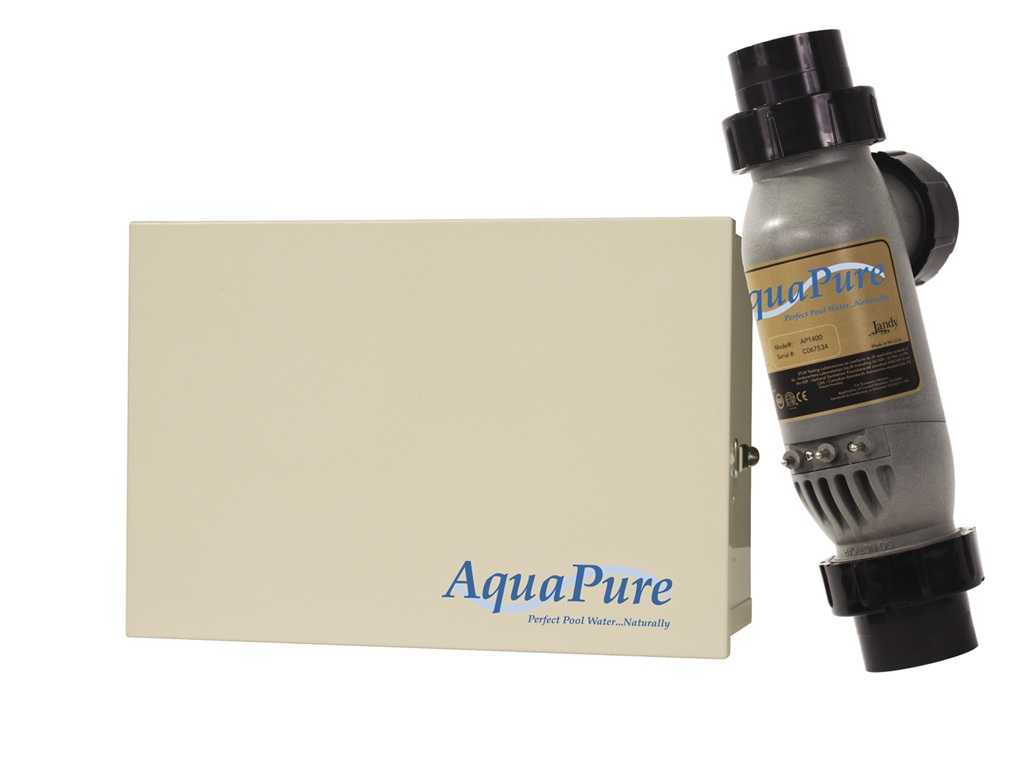How a Salt System Operates
Salt systems have three main components.
Salt
The first component is plain old salt. You have to have a minimum level of about 3000 parts per million of salt in the pool water. Salt makes the water conductive so that the electricity can pass between the plates in the cell. If the salt level goes too low, then the chlorine production simply stops. Salt is also the raw material from which the chlorine is produced.
Control Box
The control unit is a device that sends power to the salt cell. The unit controls how much chlorine is produced by regulating how long the power is applied to the cell. If you turn the control knob way down, then the unit might apply power to the cell only 25% of the time, thereby producing less chlorine. If you turn the control knob up, then the unit would apply power to the cell for a longer period of time. The amount of power applied to the cell does not increase or decrease.
The control unit will often sense the level of salt in the pool and indicate the need to add more salt.
Self cleaning units have a feature built into the unit that reverses the polarity of the voltage through the cell in order to clean any scale buildup off of the cell plates.
Salt Cell
The salt cell is a series of plates with opposite charges in a cell. As the water passes between the plates, electrolysis takes place, releasing the chlorine in the salt.
Saline Generating Systems offers three innovative products for the sanitization of residential swimming pools: the Breeze 320, Breeze 540 and Breeze 760 Salt Chlorine Generators. The Breeze Series is proudly made in the USA, and designed with the consumer in mind with its simplicity of operation,dependability and increased longevity.
You will no longer have to experience dry, irritated skin, red burning eyes and that heavy chlorine smell due to by-products of typical chlorine sanitizing methods. With the Breeze Series Salt Chlorine Generator, your pool will be continually “shocked” by a much milder and safer type of free chlorine that will result in water that feels soft and luxurious.
Cell Maintenance Tips

Maintaining pH at the levels recommended in the Operating Instructions (7.2 – 7.8) should result in cell cleaning 3-4 times a year in areas with hard water. Cells can be cleaning less frequently in soft water areas.
The cell will require maintenance when the “Inspect Cell” light is either flashing or is on solid and the salt level is confirmed to be above 2500 part per million.
Procedure for cleaning Turbo Cell
- Turn Filter pump off.
- Remove the AquaRite Turbo Cell from its position in the plumbing by loosening the unions on both ends of the cell.
- You will need a small plastic bucket (6 – 8″ opening), water and muriatic acid. (Picture A)
- Fill the bucket with 3 – 4″ of water. (Picture B)
- Set the Turbo Cell, on end, in the bucket of water. (Picture C)
- Add 1 – 1 1/2″ of muriatic to the water in the bucket. Let the cell sit in this solution for 5-10 minutes. (Picture D)
- Turn the cell over and let the other end sit in the solution for 5 – 10 minutes. You will be submersing the cord, which will not be affected by the mild acid solution. (Picture E) Look in both ends of the cell to confirm calcium deposits are removed. If not, repeat cleaning procedure.
- Rinse cell with fresh water and replace in plumbing line. Hand tighten unions before restoring power to filter pump.
IMPORTANT: DISPOSE OF WATER AND ACID MIXTURE IN A SAFE MANNER BY POURING THE CONTENTS OF THE BUCKET IN YOUR POOL.


